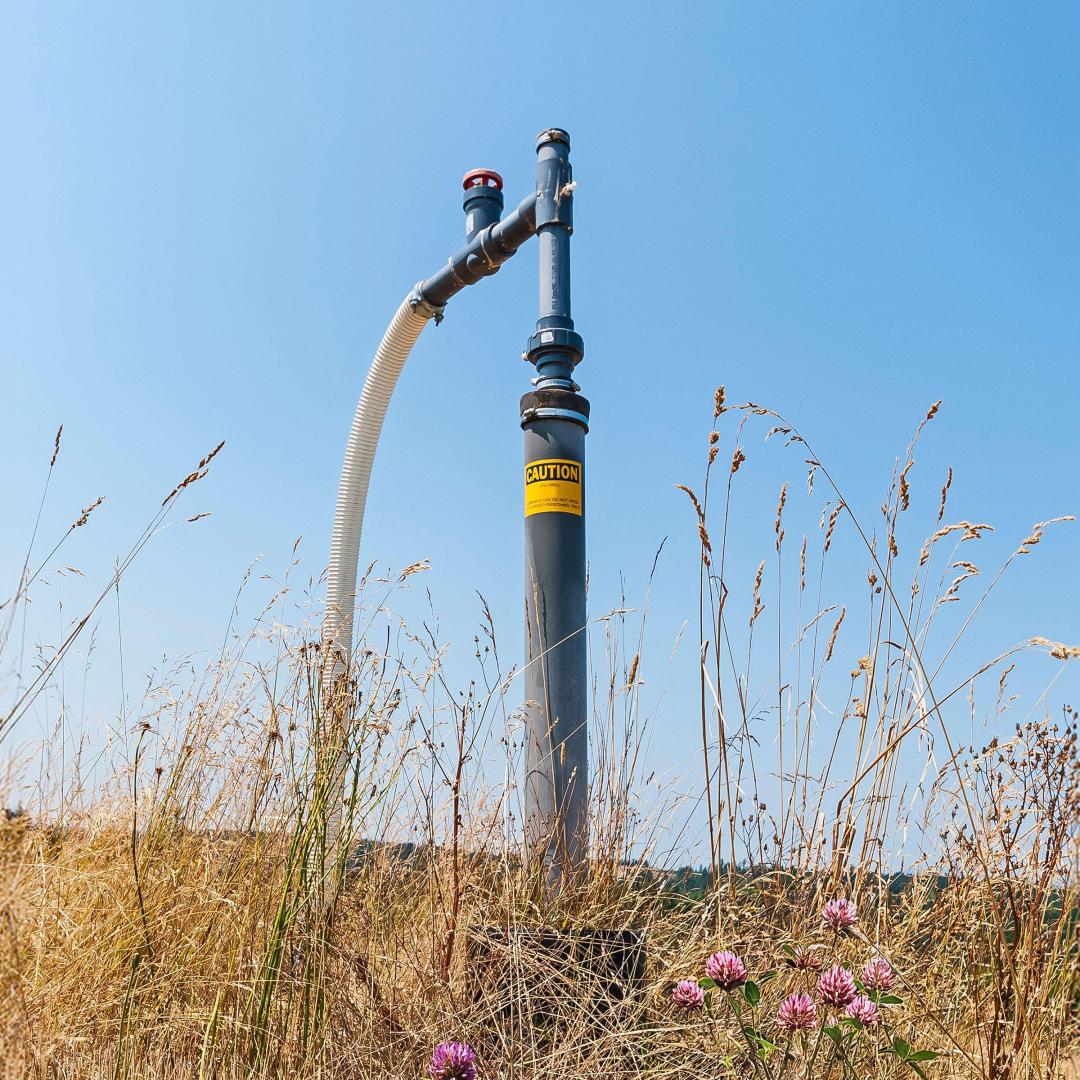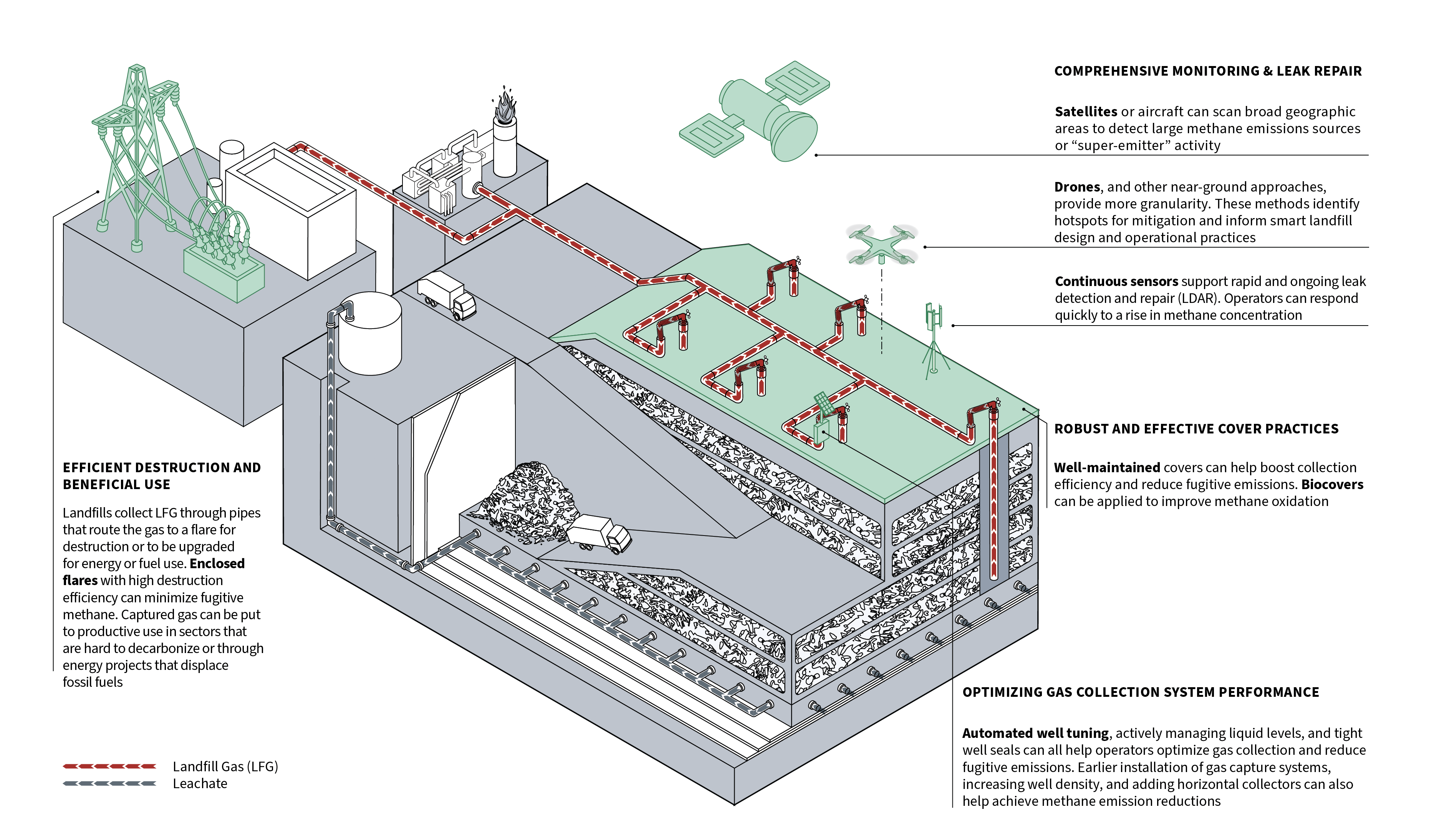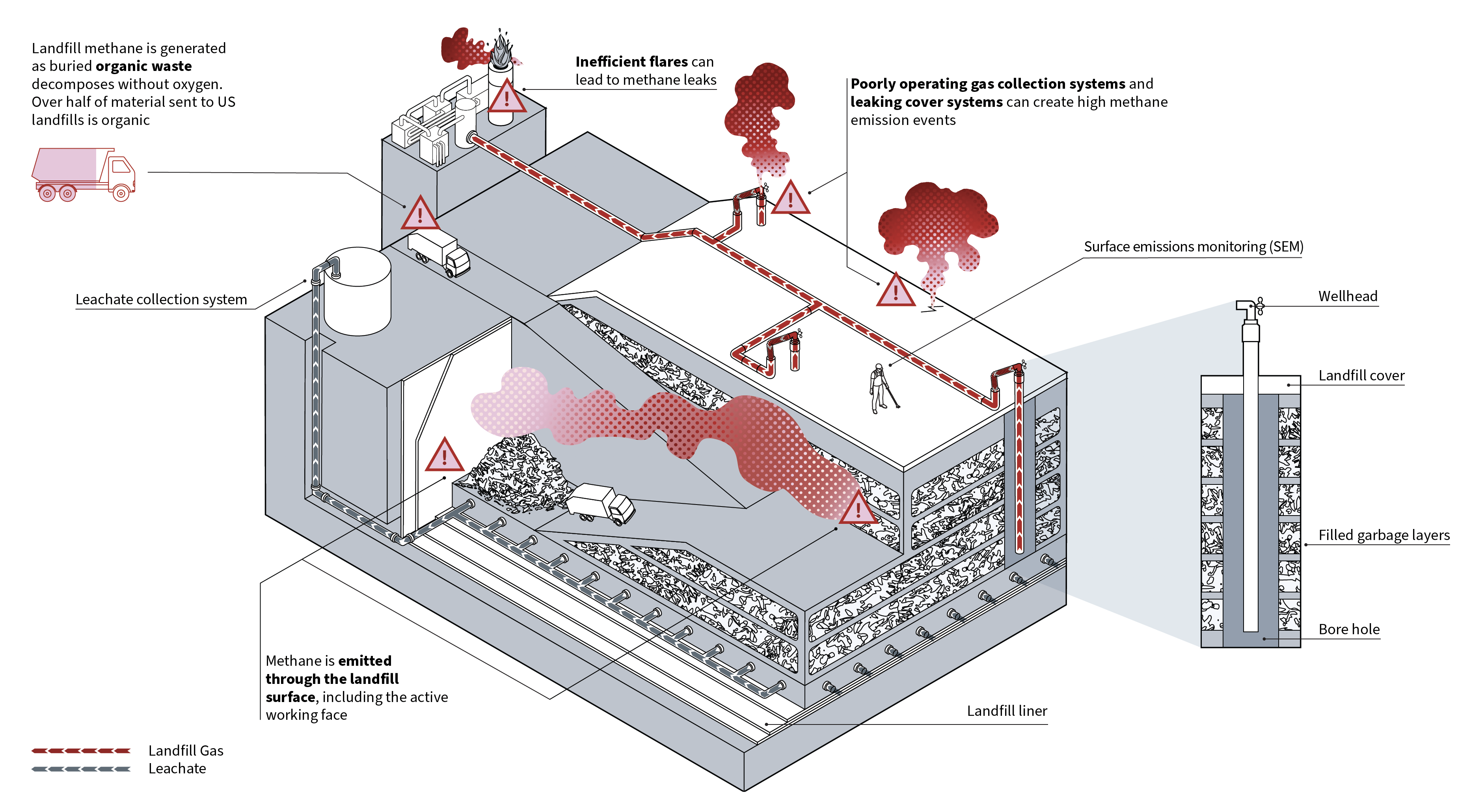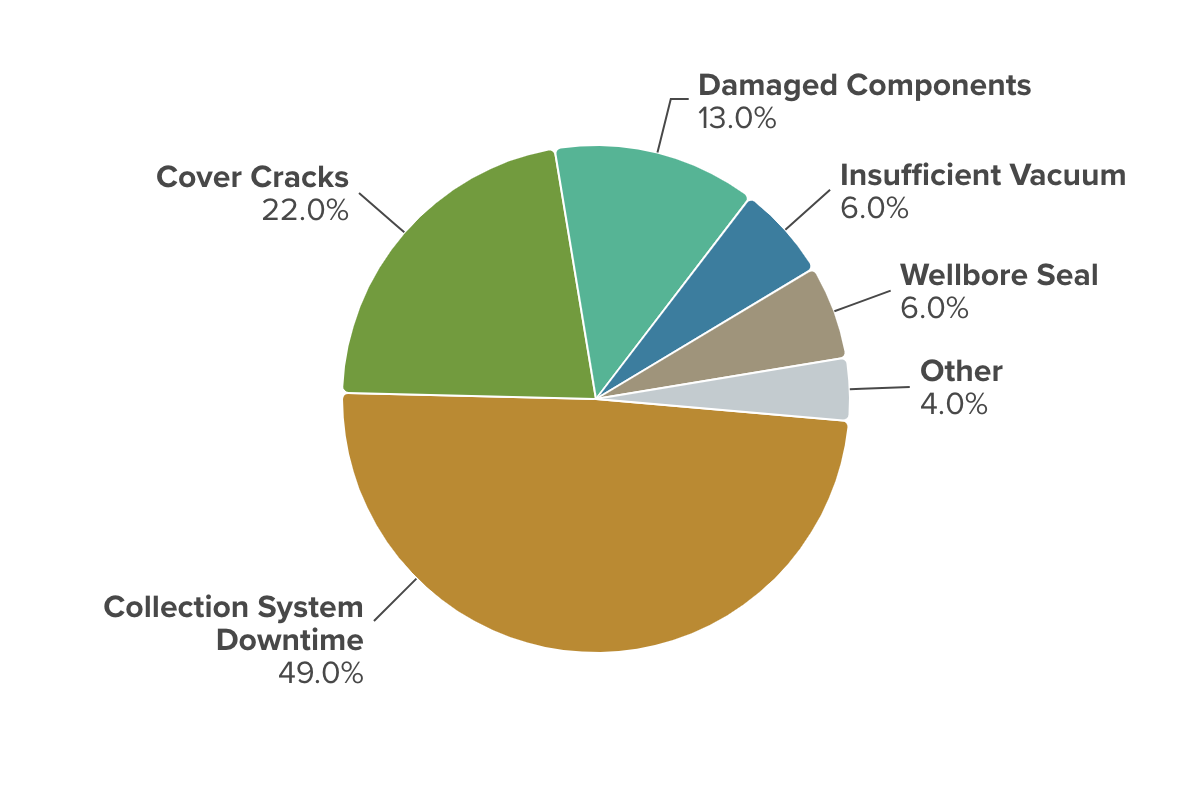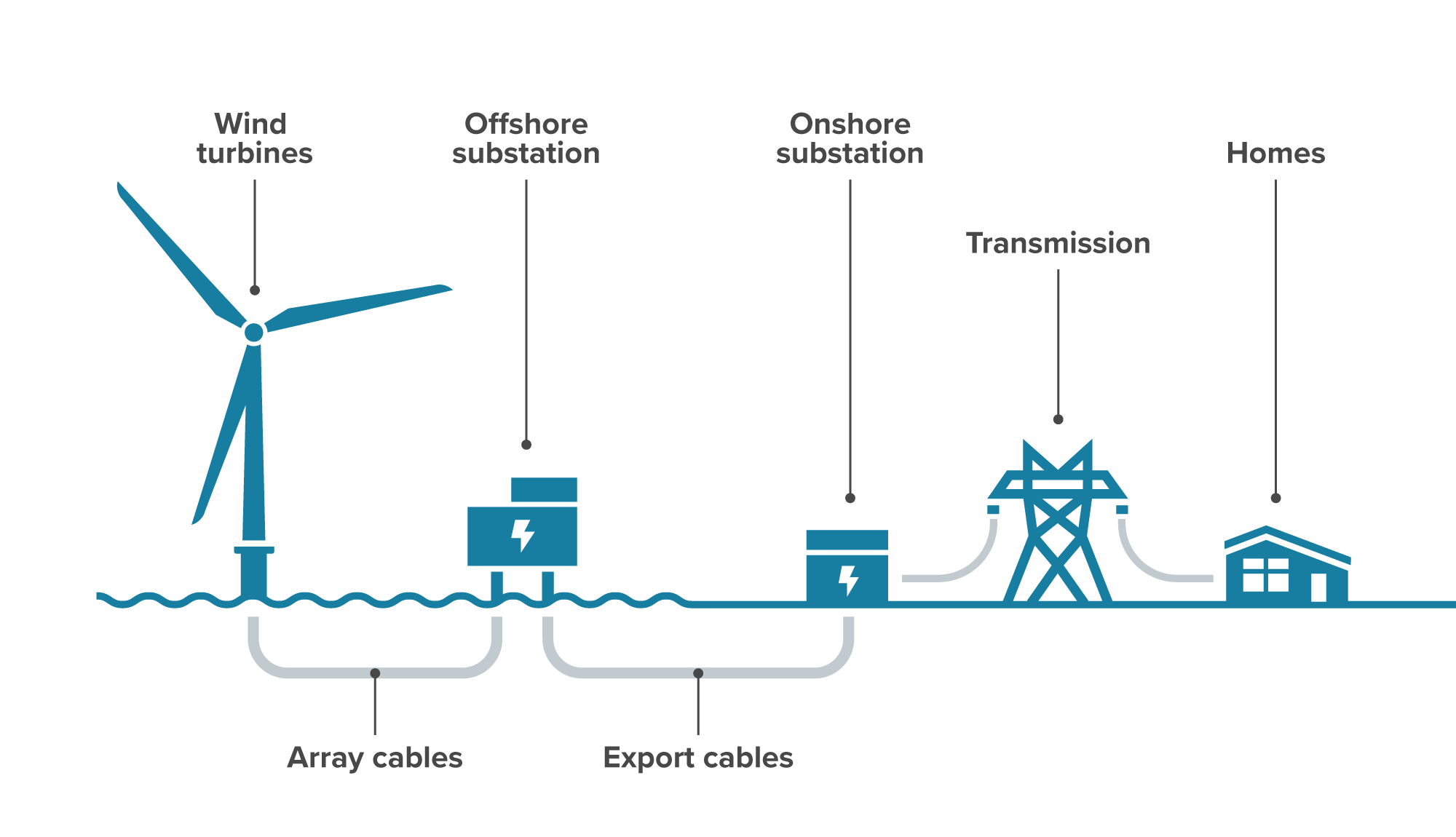Adeyeye, K., Ijumba, N., & Colton, J. (2020). Exploring the environmental and economic impacts of wind energy: A cost-benefit perspective. International Journal of Sustainable Development and World Ecology, 27(8), 718–731. Link to source: https://doi.org/10.1080/13504509.2020.1768171
Afridi, S. K., Koondhar, M. A., Jamali, M. I., Alaas, Z. M., Alsharif, M. H., Kim, M. K., Mahariq, I., Touti, E., Aoudia, M., & Ahmed, M. M. R. (2024). Winds of progress: An in-depth exploration of offshore, floating, and onshore wind turbines as cornerstones for sustainable energy generation and environmental stewardship. IEEE Access, 12, 66147–66166. Link to source: https://doi.org/10.1109/ACCESS.2024.3397243
Akhtar, N., Geyer, B., Rockel, B., Sommer, P. S., & Schrum, C. (2021). Accelerating deployment of offshore wind energy alter wind climate and reduce future power generation potentials. Scientific Reports, 11(1), Article 11826. Link to source: https://doi.org/10.1038/s41598-021-91283-3
Akhtar, N., Geyer, B., & Schrum, C. (2024). Larger wind turbines as a solution to reduce environmental impacts. Scientific Reports, 14(1), Article 6608. Link to source: https://doi.org/10.1038/s41598-024-56731-w
Alsaleh, A., & Sattler, M. (2019). Comprehensive life cycle assessment of large wind turbines in the US. Clean Technologies and Environmental Policy, 21(4), 887–903. Link to source: https://doi.org/10.1007/s10098-019-01678-0
Atilgan Turkmen, B., & Germirli Babuna, F. (2024). Life cycle environmental impacts of wind turbines: A path to sustainability with challenges. Sustainability, 16(13), Article 5365. Link to source: https://doi.org/10.3390/SU16135365
Beiter, P., Cooperman, A., Lantz, E., Stehly, T., Shields, M., Wiser, R., Telsnig, T., Kitzing, L., Berkhout, V., & Kikuchi, Y. (2021). Wind power costs driven by innovation and experience with further reductions on the horizon. Wiley Interdisciplinary Reviews: Energy and Environment, 10(5), Article e398. Link to source: https://doi.org/10.1002/WENE.398
Bills, G. (2021). Turbine lifetime limits require a reality check | News+ | IJGlobal. Link to source: https://www.ijglobal.com/articles/157132/turbine-lifetime-limits-require-a-reality-check
Bosch, J., Staffell, I., & Hawkes, A. D. (2018). Temporally explicit and spatially resolved global offshore wind energy potentials. Energy, 163, 766–781. Link to source: https://doi.org/10.1016/J.ENERGY.2018.08.153
Buonocore, J. J., Luckow, P., Fisher, J., Kempton, W., & Levy, J. I. (2016). Health and climate benefits of offshore wind facilities in the Mid-Atlantic United States. Environmental Research Letters, 11(7), Article 074019. Link to source: https://doi.org/10.1088/1748-9326/11/7/074019
de La Beaumelle, N. A., Blok, K., de Chalendar, J. A., Clarke, L., Hahmann, A. N., Huster, J., Nemet, G. F., Suri, D., Wild, T. B., & Azevedo, I. M. L. (2023). The global technical, economic, and feasible potential of renewable electricity. Annual Review of Environment and Resources, 48, 419–449. Link to source: https://doi.org/10.1146/annurev-environ-112321-091140
Degraer, S., Carey, D. A., Coolen, J. W. P., Hutchison, Z. L., Kerckhof, F., Rumes, B., & Vanaverbeke, J. (2020). Offshore wind farm artificial reefs affect ecosystem structure and functioning: A synthesis. Oceanography, 33(4), 48–57. Link to source: https://doi.org/10.5670/oceanog.2020.405
E2. (2023). California’s offshore wind opportunity. Link to source: https://e2.org/reports/ca-offshore-wind-opportunity-2022/
Energy Sector Management Assistance Program. (n.d.). Offshore wind technical potential | Analysis and maps. Link to source: https://www.esmap.org/esmap_offshorewind_techpotential_analysis_maps
Energy Sector Management Assistance Program. (2019). Going global: Expanding offshore wind to emerging markets. World Bank Group. Link to source: http://documents.worldbank.org/curated/en/716891572457609829/Going-Global-Expanding-Offshore-Wind-To-Emerging-Markets
Galparsoro, I., Menchaca, I., Garmendia, J. M., Borja, Á., Maldonado, A. D., Iglesias, G., & Bald, J. (2022). Reviewing the ecological impacts of offshore wind farms. npj Ocean Sustainability, 1, Article 1. Link to source: https://doi.org/10.1038/s44183-022-00003-5
Global Wind Energy Council. (2024). Global offshore wind report 2024. Link to source: https://26973329.fs1.hubspotusercontent-eu1.net/hubfs/26973329/2.%20Reports/Global%20Offshore%20Wind%20Report/GOWR24.pdf
Global Wind Energy Council. (2025). Global offshore wind report 2025. Link to source: https://26973329.fs1.hubspotusercontent-eu1.net/hubfs/26973329/2.%20Reports/Global%20Offshore%20Wind%20Report/GOWR25.pdf
Global Wind Energy Council, & Global Wind Organization. (2021). Global wind workforce outlook 2021–2025. Link to source: https://cdn.prod.website-files.com/5ce6247122f44f2bd5edebbe/60b534c0e5ca5c6c4c4705b0_GWWO%20v4.pdf
Gonyo, S. B., Fleming, C. S., Freitag, A., & Goedeke, T. L. (2021). Resident perceptions of local offshore wind energy development: Modeling efforts to improve participatory processes. Energy Policy, 149, Article 112068. Link to source: https://doi.org/10.1016/J.ENPOL.2020.112068
Haggett, C. (2011). Understanding public responses to offshore wind power. Energy Policy, 39(2), 503–510. Link to source: https://doi.org/10.1016/J.ENPOL.2010.10.014
Intergovernmental Panel on Climate Change. (2023). Climate change 2023: Synthesis report. Contribution of working groups I, II and III to the sixth assessment report of the intergovernmental panel on climate change (The Core Writing Team, H. Lee, & J. Romero, Eds.) [Synthesis report]. Link to source: https://www.ipcc.ch/report/ar6/syr/downloads/report/IPCC_AR6_SYR_FullVolume.pdf
International Energy Agency. (2019). Offshore wind outlook 2019. Link to source: https://www.iea.org/reports/offshore-wind-outlook-2019
International Energy Agency. (2024a). World energy balances—Data product. Link to source: https://www.iea.org/data-and-statistics/data-product/world-energy-balances
International Energy Agency. (2024b). World energy outlook 2024. Link to source: https://www.iea.org/reports/world-energy-outlook-2024
International Energy Agency, & Nuclear Energy Agency. (2020). Projected costs of generating electricity – 2020 edition [Report]. OECD Publishing. Link to source: https://www.oecd-nea.org/upload/docs/application/pdf/2020-12/egc-2020_2020-12-09_18-26-46_781.pdf
International Renewable Energy Agency. (2024a). Floating offshore wind outlook. Link to source: https://www.irena.org/-/media/Files/IRENA/Agency/Publication/2024/Jul/IRENA_G7_Floating_offshore_wind_outlook_2024.pdf
International Renewable Energy Agency. (2024b). Renewable energy statistics 2024. Link to source: https://www.irena.org/-/media/Files/IRENA/Agency/Publication/2024/Jul/IRENA_Renewable_Energy_Statistics_2024.pdf
International Renewable Energy Agency. (2024c). Renewable power generation costs in 2023. Link to source: https://www.irena.org/Publications/2024/Sep/Renewable-Power-Generation-Costs-in-2023
International Renewable Energy Agency, & Global Wind Energy Council. (2023). Enabling frameworks for offshore wind scale up: Innovations in permitting. Link to source: https://www.energycentral.com/renewables/post/irena-enabling-frameworks-offshore-wind-scale---innovations-permitting-vZRn6mKeZ1hBX0n
Jansen, M., Staffell, I., Kitzing, L., Quoilin, S., Wiggelinkhuizen, E., Bulder, B., Riepin, I., & Müsgens, F. (2020). Offshore wind competitiveness in mature markets without subsidy. Nature Energy, 5(8), 614–622. Link to source: https://doi.org/10.1038/s41560-020-0661-2
Kaldellis, J. K., & Apostolou, D. (2017). Life cycle energy and carbon footprint of offshore wind energy. Comparison with onshore counterpart. Renewable Energy, 108, 72–84. Link to source: https://doi.org/10.1016/J.RENENE.2017.02.039
Lazard. (2023, April). LCOE+ [PowerPoint slides]. Link to source: https://www.lazard.com/media/2ozoovyg/lazards-lcoeplus-april-2023.pdf
Letcher, T. M. (Ed.). (2023). Wind energy engineering : A handbook for onshore and offshore wind turbines (2nd ed.). Academic Press. Link to source: https://www.sciencedirect.com/book/9780323993531/wind-energy-engineering
Lopez, A., Green, R., Williams, T., Lantz, E., Buster, G., & Roberts, B. (2022). Offshore wind energy technical potential for the contiguous United States [Report]. Link to source: https://docs.nrel.gov/docs/fy22osti/83650.pdf
McCoy, A., Musial, W., Hammond, R., Mulas Hernando, D., Duffy, P., Beiter, P., Pérez, P., Baranowski, R., Reber, G., & Spitsen, P. (2024). Offshore wind market report: 2024 edition (NREL/TP-5000-90525) [Technical report]. National Renewable Energy Laboratory. Link to source: https://www.nrel.gov/docs/fy24osti/90525.pdf
Mello, G., Ferreira Dias, M., & Robaina, M. (2020). Wind farms life cycle assessment review: CO2 emissions and climate change. Energy Reports, 6, 214–219. Link to source: https://doi.org/10.1016/J.EGYR.2020.11.104
Millstein, D., O’Shaughnessy, E., & Wiser, R. (2024). Climate and air quality benefits of wind and solar generation in the United States from 2019 to 2022. Cell Reports Sustainability, 1(6), Article 100105. Link to source: https://doi.org/10.1016/J.CRSUS.2024.100105
Nagababu, G., Srinivas, B. A., Kachhwaha, S. S., Puppala, H., & Kumar, S. V. V. A. (2023). Can offshore wind energy help to attain carbon neutrality amid climate change? A GIS-MCDM based analysis to unravel the facts using CORDEX-SA. Renewable Energy, 219, Article 119400. Link to source: https://doi.org/10.1016/J.RENENE.2023.119400
National Oceanic and Atmospheric Administration. (n.d.). Offshore wind energy: Assessing impacts to marine life. National Oceanic and Atmospheric Administration Fisheries. Retrieved August 6, 2025, from Link to source: https://www.fisheries.noaa.gov/topic/offshore-wind-energy/assessing-impacts-to-marine-life
Ørsted (n.d.) How does offshore wind power work? Retrieved July 8, 2025, from Link to source: https://orsted.com/en/what-we-do/renewable-energy-solutions/offshore-wind/technology
Peach, S. (2021, June 30). What’s the carbon footprint of a wind turbine? Yale Climate Connections. Link to source: https://yaleclimateconnections.org/2021/06/whats-the-carbon-footprint-of-a-wind-turbine/
Qiu, M., Zigler, C. M., & Selin, N. E. (2022). Impacts of wind power on air quality, premature mortality, and exposure disparities in the United States. Science Advances, 8(48), Article eabn8762. Link to source: https://www.science.org/doi/10.1126/sciadv.abn8762
Ren, Z., Zhang, S., Liu, H., Pu, L., Wang, X., Wang, Z., Wu, M., & Chen, Z. (2025). The environmental and public health benefits of offshore wind power deployment in China. Environmental Science & Technology, 59(1), 315–327. Link to source: https://doi.org/10.1021/acs.est.4c06125
Rubin, E. S., Azevedo, I. M. L., Jaramillo, P., & Yeh, S. (2015). A review of learning rates for electricity supply technologies. Energy Policy, 86, 198–218. Link to source: https://doi.org/10.1016/J.ENPOL.2015.06.011
Schlömer, S., Bruckner, T., Fulton, L., Hertwich, E., McKinnon, A., Perczyk, D., Roy, J., Schaeffer, R., Sims, R., Smith, P., & Wiser, R. (2014). Annex III: Technology-specific cost and performance parameters. In O. Edenhofer, R. Pichs-Madruga, Y. Sokona, E. Farahani, S. Kadner, K. Seyboth, A. Adler, I. Baum, S. Brunner, P. Eickemeier, B. Kriemann, J. Savolainen, S. Schlömer, C. von Stechow, T. Zwickel, & J. C. Minx (Eds.), Climate change 2014: Mitigation of climate change. Contribution of working group III to the fifth assessment report of the intergovernmental panel on climate change. Cambridge University Press. Link to source: https://www.ipcc.ch/site/assets/uploads/2018/02/ipcc_wg3_ar5_annex-iii.pdf
Shawhan, D., Robson, S., & Russell, E. (2025). Offshore wind power examined: Effects, benefits, and costs of offshore wind farms along the US Atlantic and Gulf Coasts (Working Paper No. 24-17). Resources for the Future. Link to source: https://media.rff.org/documents/WP_24-17_2.25_Update.pdf
Shields, M., Beiter, P., & Nunemaker, J. (2022). A systematic framework for projecting the future cost of offshore wind energy (NREL/TP-5000-81819) [Technical report]. National Renewable Energy Laboratory. Link to source: https://www.nrel.gov/docs/fy23osti/81819.pdf
Stefek, J., Constant, C., Clark, C., Tinnesand, H., Christol, C., & Baranowski, R. (2022). U.S. offshore wind workforce assessment (NREL/TP-5000-81798) [Technical report]. National Renewable Energy Laboratory. Link to source: https://docs.nrel.gov/docs/fy23osti/81798.pdf
TNO, & BLIX Consultancy. (2021). Pathways to potential cost reductions for offshore wind energy [Technical report]. Link to source: https://topsectorenergie.nl/documents/332/20210125_RAP_Pathways_to_potential_cost_reduction_offshore_wind_energy_F03.pdf
Tumse, S., Bilgili, M., Yildirim, A., & Sahin, B. (2024). Comparative Analysis of Global Onshore and Offshore Wind Energy Characteristics and Potentials. Sustainability, 16(15), Article 6614. Link to source: https://doi.org/10.3390/SU16156614
U.S. Energy Information Administration. (2023). Levelized costs of new generation resources in the annual energy outlook 2023. Link to source: https://www.eia.gov/outlooks/aeo/electricity_generation/pdf/AEO2023_LCOE_report.pdf
U.S. Energy Information Administration. (2024, June 12). Wind explained: Where wind power is harnessed. Link to source: https://www.eia.gov/energyexplained/wind/where-wind-power-is-harnessed.php
Wilhelmsson, D., Malm, T., & Öhman, M. C. (2006). The influence of offshore windpower on demersal fish. ICES Journal of Marine Science, 63(5), 775–784. Link to source: https://doi.org/10.1016/J.ICESJMS.2006.02.001
Wiser, R., Rand, J., Seel, J., Beiter, P., Baker, E., Lantz, E., & Gilman, P. (2021). Expert elicitation survey predicts 37% to 49% declines in wind energy costs by 2050. Nature Energy, 6(5), 555–565. Link to source: https://doi.org/10.1038/s41560-021-00810-z
World Bank Group. (2021). Key factors for successful development of offshore wind in emerging markets. Energy Sector Management Assistance Program, World Bank Group. Link to source: https://documents1.worldbank.org/curated/en/343861632842395836/pdf/Key-Factors-for-Successful-Development-of-Offshore-Wind-in-Emerging-Markets.pdf
World Economic Forum. (2025). Nature positive: Role of the offshore wind sector [Insight report]. Link to source: https://www.weforum.org/publications/nature-positive-transitions-sectors/offshore-wind-sector/
World Forum Offshore Wind. (2024). Global offshore wind report 2023. Link to source: https://wfo-global.org/wp-content/uploads/2024/04/WFO-Report-2024Q1.pdf
Yuan, W., Feng, J.-C., Zhang, S., Sun, L., Cai, Y., Yang, Z., & Sheng, S. (2023). Floating wind power in deep-sea area: Life cycle assessment of environmental impacts. Advances in Applied Energy, 9, Article 100122. Link to source: https://doi.org/10.1016/J.ADAPEN.2023.100122
Zhou, F., Tu, X., & Wang, Q. (2022). Research on offshore wind power system based on Internet of Things technology. International Journal of Low-Carbon Technologies, 17, 645–650. Link to source: https://doi.org/10.1093/IJLCT/CTAC049



